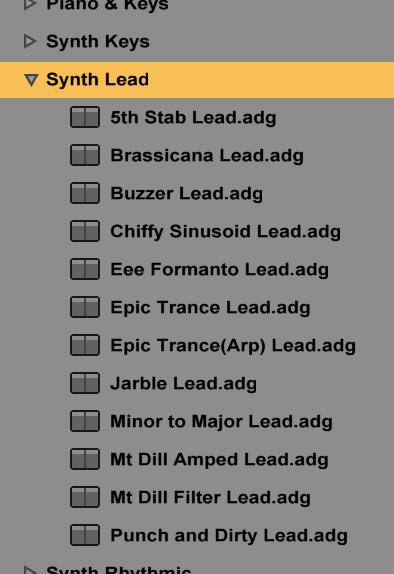I'm not sure what you mean by a "piano synth", but I'll talk about what you don't have when you buy any edition of Ableton Live that is not the full Suite edition and what Sylenth1 is all about.
Most software synthesizers are software recreations or imitations of an analog subtractive synthesizer. The hugely popular Moog Minimoog synthesizer is a classic example of a subtractive synthesizer. Sounds are created by electronic oscillators which make different wave shapes that have different sounds. Those waves are then mixed in different amounts, filtered (the subtractive part), and modulated in different ways, and then amplified in certain ways. The classic ingredients are oscillators, filters, LFOs (low frequency oscillators), mixers, and envelope generators.
Software synths recreate the different components with a combination of sound samples and component modeling (where a small piece of software imitates the function of a real world circuit element) combined with a software interface that imitates the sound and controls of a real-world synthesizer. If you spend the money to by the Suite edition of Ableton Live, then you get their analog subtractive synth virtual instrument that is just called "Analog".
Ableton Operator (also including in the Suite edition of Live) is their software synth version of a real-world FM synthesizer. This type of synthesis is a bit more complicated and the most famous real-world example is probably the Yamaha DX7.
Sylenth1 is a software version of an analog subtractive synthesizer, so it's closer to being like Analog than it is like Operator.
The Intro and Standard editions of Live do not include any software synthesizers, as far as I can tell (see: https://www.ableton.com/en/live/feature-comparison/#software-instruments).
What you do get is Simpler, which is a sample playback instrument. This kind of thing used to be called a "wave table synthesizer" in the late 80s. Simpler just plays back samples, which are little recordings of other instruments or sound files of any kind (it could be crickets chirping, a drill, a rocket, or a harmonica playing). What makes a sampler different from just recording and playing back sound is that it lets you increase and decrease the pitch of the playback automatically as you play different keys on a keyboard or send it different MIDI note messages. So with a sample of just one flute sound, for example, you can play back all the notes you want with a flute sound.
Sampling gets a lot more complicated from there, but that's what Simpler does - it lets you play back samples of other instruments. The included instrument sounds in Live Standard and Intro are samples that Live loads into Simpler. There are some things you can do with Simpler to shape the sample sounds like a real synthesizer, but they are very crude.
If you want to learn about how a full synthesizer or synthesizer virtual instrument works (which I recommend highly if you want to get into music production of any kind), you'll want a real virtual instrument that re-creates a subtractive synthesizer. (Subtractive synths are by far the most popular kind.)
The upgrade to Live Suite is pretty expensive and will give you many other things you may or may not need. Other more affordable options include Sylenth1 (obviously), NI Massive, Arturia's line of virtual synths, several of the u-he products, some of the UVI products, Reveal Spire, and many more.

